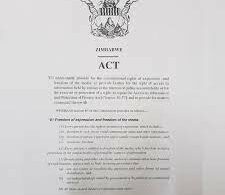Zimbabwe is one of the countries affected by El Nino and is expected to suffer drought conditions.
According to the United Nations Office for the Coordination of Humanitarian Affairs (OCHA), the National Oceanic and Atmospheric Administration (NOAA) confirmed a strong El Nino event occurring between October 2023 and March 2024 adding that the event is expected to have adverse effects on rainfall from October 2023 to March 2024, potentially leading to drought conditions in Zimbabwe.
“Anticipated outcomes include a delayed onset of rainfall and prolonged dry spells which could significantly impact food production and disrupt the food chain,” they said.
According to the available forecast from the Meteorological Service Department (MSD) in 2023, the El Nino episode will affect the Southern parts of the country, spanning from west to east. The areas include Matabeleland North, Matabeleland South, Midlands, Masvingo and Manicaland.
MSD predicted erratic and low rainfall patterns this year because of El Nino conditions as a result of climate change.
Midlands and Matabeleland provinces were predicted to get below-normal rains.
What is an El Nino?
A climate change expert, Anna Brazier, described it as a natural weather pattern that normally occurs every 7 years. It is characterised by warming in the Pacific Ocean. This warming is so strong that it affects the weather worldwide, causing droughts in some areas (such as Zimbabwe) and floods in others.
She said the opposite of El Nino is La Nina which is characterized by cooling in the Pacific Ocean. During a La Nina year, Zimbabwe often experiences heavy rainfall.
The Food and Agriculture Organisation (FAO) said El Nino last hit Zimbabwe in 2016 and left 40 million people in southern Africa needing food assistance.
The sectors affected by El Nino include Agriculture, Water, Education, Health, Wildlife, Food and Nutrition among others.
MSD said El Niño is part of the natural climate phenomenon called the El Niño Southern Oscillation (ENSO). It has two opposite states – El Niño and La Niña – both of which significantly alter global weather. an El Niño event is typically declared when sea surface temperatures in the tropical eastern Pacific rise to at least 0.5 °C above the long-term average.
“El Niño events tend to develop during the period Apr-Jun, often reaching their maximum strength during October – February. They persist for 9-12 months, though occasionally persisting for up to 2 years, and typically recur every 2 to 7 years,” they said.
The Food and Agriculture Organization (FAO) said El Nino last hit Zimbabwe in 2016 and left 40 million people in Southern Africa needing food assistance.
The sectors affected by El Nino include Agriculture, Water, Education, Health, Wildlife, Food and Nutrition among others.
Effects of El Nino on the Weather
MSD said not every ENSO event is the same, and the consequences vary from region to region. However, scientists have observed some generally consistent patterns based on
Analysis of historical ENSO events:
Temperatures
According to MSD, Global temperatures typically increase during an El Niño episode,
and fall during La Niña.
“El Niño means warmer water spreads further and stays closer to the surface. This releases more heat into the atmosphere, creating wetter and warmer air. However, the regional effects are complicated, and some places may be both warmer and cooler than expected at different points in the year.”
Changes to rainfall
MSD said during El Niño events, the warmer water pushes the Pacific jet stream’s strong air currents further to the south and the east.
“This brings drier conditions to Tropical regions like southeast Asia, Australia and central Africa typically experience. Under La Niña, the opposite is seen.”
Tropical Cyclones
“El Niño also affects atmospheric circulation patterns, which means there are generally more tropical storms in the tropical Pacific, but fewer in the Indian Ocean, including southern Africa. During La Niña, the reverse is typically true.”
Carbon dioxide (CO2) levels
MSD said Scientists have also observed that CO2 levels in the atmosphere increase during El Niño events, possibly as a result of warmer and drier conditions in tropical regions. If plants grow less quickly due to drought, they absorb less CO2, while more wildfires in places like Australia mean more CO2 is released.
NB: Scientists do not use El Nino as the only indicator
Historical impacts of past El Niño events
According to MSD, analysis of historical El Niño impacts reveals that the majority of El Niño events in the past 43 years have had below-normal rainfall over Zimbabwe.
“Most parts of Zimbabwe experienced below average DJFM rainfall at least 60% of the time suggesting a doubling of the risk of dry conditions during an El Niño event. An analysis of each El Niño season indicates that El Niño events have had significantly different impacts on rainfall, in part due to differences in the characteristics of the different El Niño events, as well as the interaction of various local and regional climate drivers such as regional SST patterns,” MSD said
“Three very strong El Niño events occurred in 1982-1983, 1997-1998 and 2014-2016. The 1982-1983 and 2015-2016 El Niño events resulted in severe droughts, while the 1997-1998 season had near-normal rainfall, due to the interplay of various local and regional climate drivers.”
The current El Nino status and impacts on the 2023-2024 rainfall season in Zimbabwe
MSD said the latest ENSO climate projections indicate that the current El Niño event has reached its peak, and is currently declining as we approach June 2024.
“This projection, combined with the current rainfall patterns which shows that some areas have received below normal rainfall, while others had above normal rainfall shows that some areas will receive considerable rainfall totals.”
They said this is contrary to general theory.
“However, the season has been marked by considerable dry spells, some for 25 days with others even lasting up to 85 days. Of significance was the one from mid-October to early December 2023, which led most areas to have a false start to the season. Some farmers planted using these rains, and this led to crop failure for those under rain-fed agriculture.”
MSD said crops under irrigation and those planted in December 2023 have been performing very well, as well as those under Pfumbudza/Intwasa (climate-sensitive intervention) spearheaded by the Government of Zimbabwe (by 24 January 2024) Crop Assessment by Agritex Office).
They said besides the currently good crop status, the Zimbabwe National Water Authority (ZINWA) also indicated that most dams are above 84% capacity, with some even spilling, e.g. Chivero, Arcadia and Mbembesi Dam.
“Maintaining the climate projections and their implications on climate-sensitive sectors, the Meteorological Services Department has held regular consultations and meetings under the National Framework for Climate Services (NFCS). These forums serve to disseminate updates, facilitate discussions on adaptive strategies, and provide advisory services to the climate-sensitive sectors. This approach will not only enhance shared understanding and response coordination but will also help in the early detection and management of potential risks.”
MSD said it is critical to foster strong collaborative networks among policymakers, researchers, and practitioners to facilitate knowledge sharing, enhance prediction accuracy, and coordinate effective responses to these climate-related challenges.
“Ultimately, the goal is to reduce vulnerability and enhance resilience across all climate-sensitive sectors in Zimbabwe, ensuring the nation’s preparedness in the face of impending climatic uncertainties associated with these climate variables such as the El Niño events,” they said.








